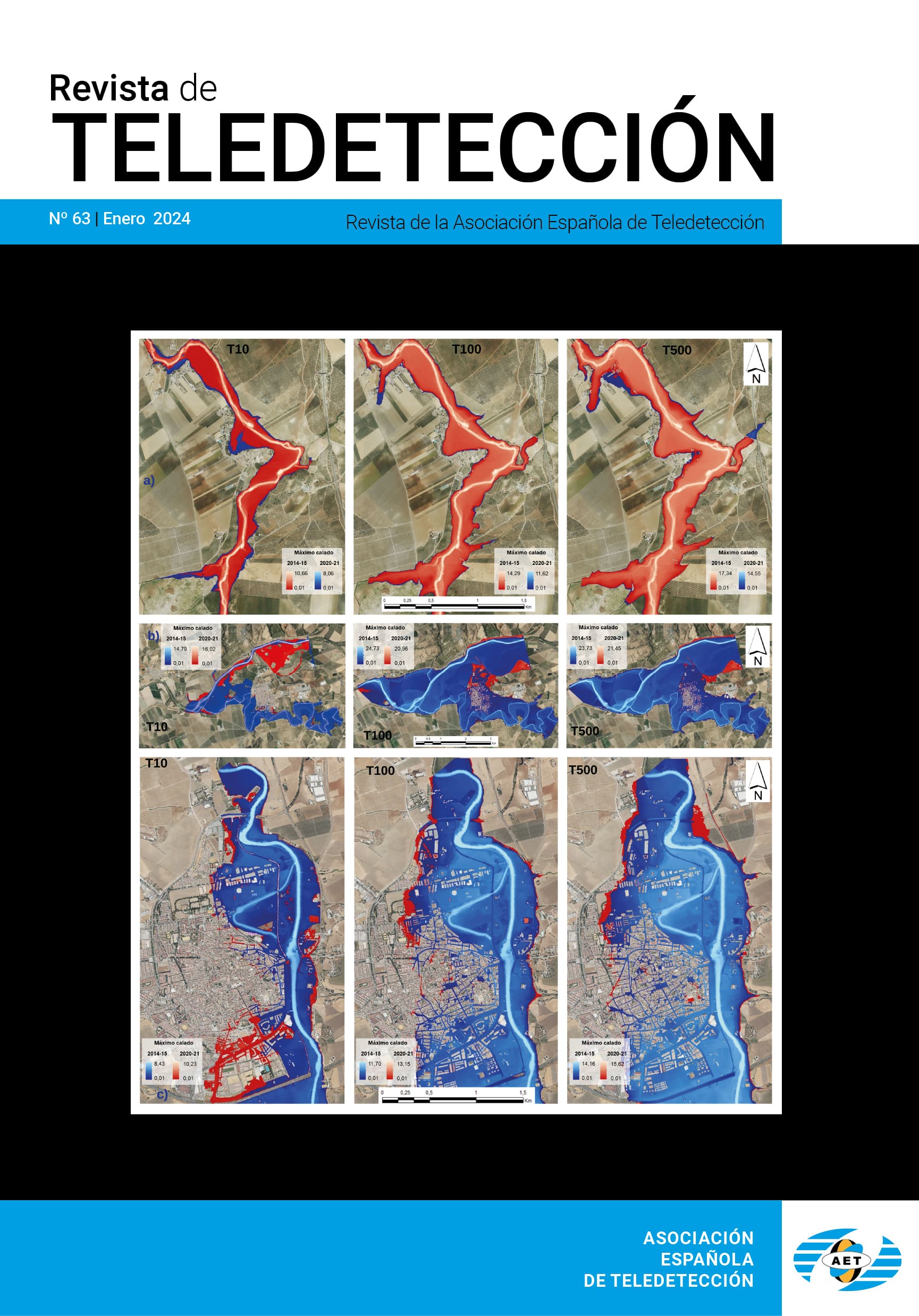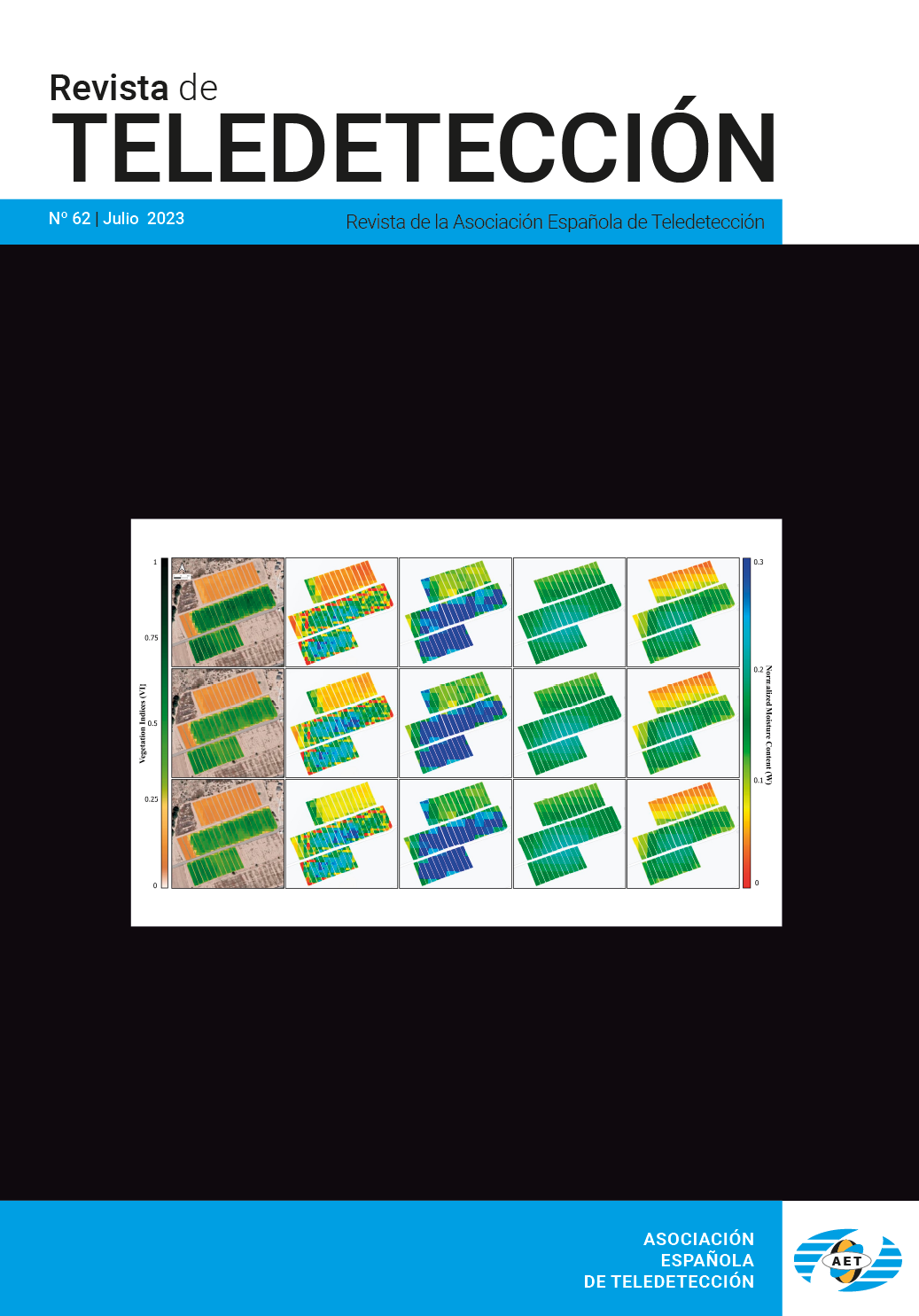Emisividad de la superficie del mar para los sensores AVHRR-NOAA y MODIS-EOSAqua
R. Niclòs, V. Caselles, C. Coll, E. Valor, J.M. Sánchez y J.M. Galve
RESUMEN
La obtención de la Temperatura de la Superficie del Mar (TSM) mediante radiometría requiere una correcta determinación de la Emisividad de la Superficie del Mar (ESM) en el infrarrojo térmico. Niclòs et al. (2005b) mostraron la validez, pero también la complejidad matemática, del modelo teórico de Wu y Smith (1997) para reproducir dicha ESM para cualquier ángulo de observación y velocidad del viento en superficie, frente a la ineficiencia del modelo de Masuda et al. (1988) para ángulos superiores a 50º. Además, propusieron una parametrización para el cálculo de la ESM basada en el modelo de Wu y Smith (1997). En este trabajo justificamos en mayor medida la adecuación del modelo de Wu y Smith (1997), y comprobamos la eficiencia de nuestra parametrización, a la vez que la adaptamos a otros sensores actualmente a bordo de satélite: AVHRR/2 a bordo de NOAA-14, AVHRR/3 en NOAA-16, NOAA-17 y NOAA-18, y MODIS en EOSAqua. Esta ecuación simple permite la precisa obtención de valores de canal de la ESM para cualquier condición de rugosidad de la superficie, producida por el viento, y ángulo de observación. Su implementación en futuros algoritmos para la determinación de la TSM (de tipo monocanal, multicanal y multiangular) podría mejorar los resultados obtenidos hasta el momento. PALABRAS CLAVE: emisividad de la superficie del mar, temperatura de la superficie del mar, infrarrojo térmico, variación angular.
ABSTRACT
Sea Surface Temperature (SST) retrieval by means of thermal radiometry requires a correct determination of the Sea Surface Emissivity (SSE) in the thermal infrared region. Niclòs et al. (2005b) showed the soundness but the mathematical complexity of the model proposed by Wu and Smith (1997) to reproduce the aforementioned SSE for any observation angle and surface wind speed, opposite to the inefficiency of the model of Masuda et al. (1988) for angles larger than 50 degrees. Moreover, a parametrization was proposed for the SSE determination based in the model of Wu and Smith (1997). In this paper, the suitability of the model of Wu and Smith (1997) is more carefully justify, and the soundness of our parametrization is checked at the same time as it is adapted to other current sensors on board satellite, such as AVHRR/2 on board NOAA-14, AVHRR/3 on NOAA-16, NOAA-17 and NOAA-18, and MODIS on EOSAqua. This simple equation allows an accurate assessment of channel values of SSE for any surface roughness, consequence of surface wind, and observation angle. Its implementation in future algorithms for SST retrieval (monochannel, split-window and dual-angle) could improve the results obtained up to the moment. KEY WORDS: sea surface emissivity, sea surface temperature, thermal infrared, angular variation.
PULSE AQUI PARA DESCARGAR EL ARTÍCULO COMPLETO




















